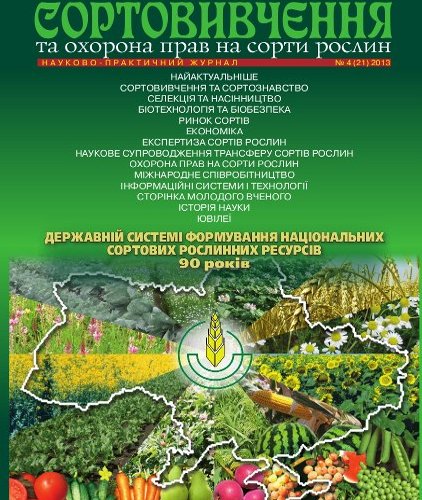The content of some of the essential elements in the fruit of the (Diospyros L.) persimmon of the Nikitsky Botanical Garden collection
DOI:
https://doi.org/10.21498/2518-1017.4(21).2013.56810Keywords:
eastern persimmon, hardiest varieties, a group of constant tart, disease resistance, chemical fruit composition, the content of essential elementsAbstract
The article mentions that the special attention is deserved by such persimmon varieties being included into the collection of Garden: Nikita Burgundy – the most famous of the hardiest varieties, widely used in industrial horticulture grade foreign breeding Hana Fuyu and a new, high-yielding variety of domestic breeding Souvenir of Autumn. Plant varieties included into the studying, grow in the same conditions at the collection site, which is located 200 meters from the coast at a height of 20-40 m above its level. Trees are 15 years old, planting scheme is 6x6 meters. The selected varieties belong to the group of constant tart on their quality whose fruits are edible only when fully ripe Varieties are characterized by high winter hardiness and disease resistance, which allows minimizing the chemicals using for plants treating and creates the conditions for organic food. The chemical composition fruits studying of three oriental persimmons varieties have performed high content of potassium, so it affords their using as a general tonic. The obtained results have revealed that according to the content of essential elements the leading fruit of variety Souvenir Autumn is considered to be, the less valuable are fruits of Nikita Burgundy, and Hana Fuyu fruits on this indicator are intermediate.Downloads
References
Калайда Ф.К. Род Diospyros L. / Ф.К. Калайда // Труды Никит. ботан. Сада. – 1970. – Т. 22. – Вып. 3–4. – С. 57–72.
Хохлов С.Ю. Хурма / С.Ю. Хохлов, А.Н. Казас // Субтропические и орехоплодные культуры: Научно-справочное издание. – Симферополь: Ариал, 2012. – С. 172–191.
Пасенков А.К. Итоги сортоизучения восточной хурмы в Никитском ботаническом саду / А.К. Пасенков // Труды Никит. ботан. сада. – 1970. – Т. 47. – С. 5–92.
Витковский В.Л. Плодовые растения мира / В.Л. Витковский. – СПб.: Лань, 2009. – 591 с.
Нижерадзе А.Н. Химико-технологическая характеристика субтропической хурмы / А.Н. Нижерадзе, Г.М. Фишман // Плодоовощное сырье для консервной промышленности. – М: Пищ. пром-сть, 1971. – 355 с.
USDA Food and Nutrient Database for Dietary Studies (FNDDS). Release 24, September 2011.
Нуралиев Ю.Н. Медицинские трактаты Авиценны / Ю.Н. Нуралиев. – Душанбе: Ирфон, 1982. – 190 с.
Гришина Л.А. Учет биомассы и химический анализ растений / Л.А. Гришина, Е.М. Самойлова. – М.: Издательство МГУ, 1971. – 99 с.
Скальный А.В. Микроэлементы для вашего здоровья / А.В. Скальный. – М.: Издательский дом «ОНИКС 21 век», 2003. – 238 с.
Downloads
Published
How to Cite
Issue
Section
License
Copyright (c) 2013 Ukrainian Institute for Plant Variety Examination

This work is licensed under a Creative Commons Attribution-ShareAlike 4.0 International License.
Starting in 2022, the copyright to the publication remains with the authors
Our journal abides by the CREATIVE COMMONS copyright rights and permissions for open access journals.
Authors, who are published in this journal, agree to the following conditions:
- The authors reserve the right to authorship of the work and pass the first publication right of this work to the journal under the terms of a Creative Commons Attribution License, which allows others to freely distribute the published research with the obligatory reference to the authors of the original work and the first publication of the work in this journal.
- The authors have the right to conclude separate supplement agreements that relate to non-exclusive work distribution in the form in which it has been published by the journal (for example, to upload the work to the online storage of the journal or publish it as part of a monograph), provided that the reference to the first publication of the work in this journal is included.

























 Ukrainian Institute for Plant Varieties Examination
Ukrainian Institute for Plant Varieties Examination  Селекційно-генетичний інститут
Селекційно-генетичний інститут Institute of Plant Physiology and Genetics of the National Academy of Sciences of Ukraine
Institute of Plant Physiology and Genetics of the National Academy of Sciences of Ukraine
 The National Academy of Agrarian Sciences of Ukraine
The National Academy of Agrarian Sciences of Ukraine